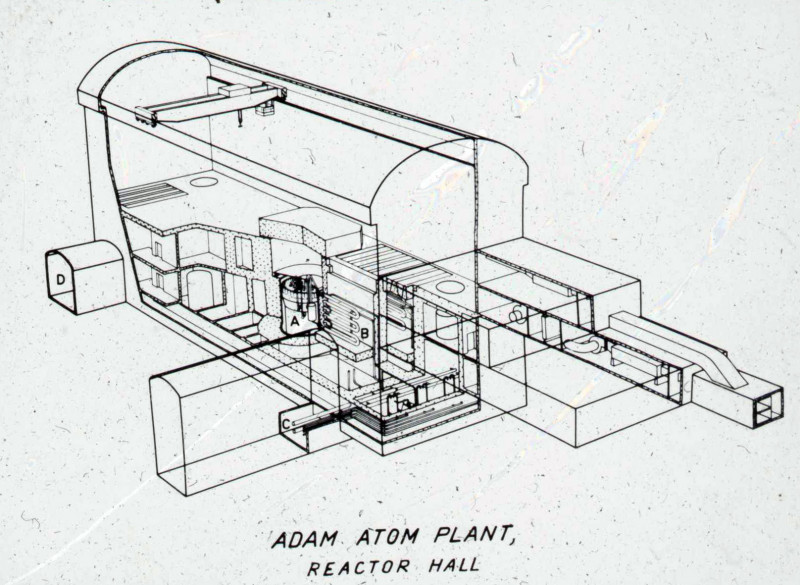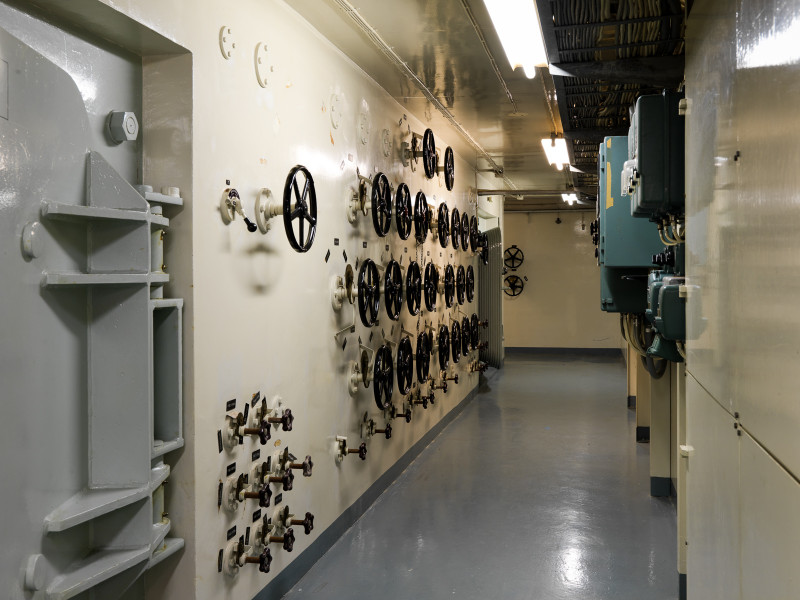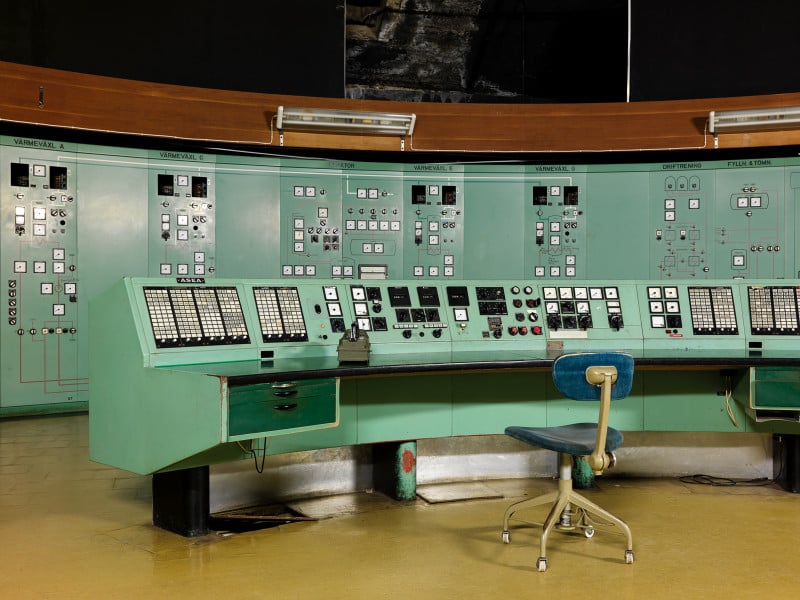
Ågesta power plant
Ågesta was the country's first energy generating nuclear reactor. Between 1964 and 1974, the plant supplied electricity and district heating to the suburb of Farsta in Stockholm. The construction and running of the Ågesta plant provided valuable experiences that were of immense benefit when designing today's reactors.

Vattenfall planned to build the atomic district heating plant, Adam, in Västerås. Year: - | Place: - | Creator: Okänd | ID: VF300057
The heavy water in the reactor's primary circuit became radioactive during operationDuring the first decades after the end of the Second World War, the Swedish state adopted 'the Swedish line', an ambitious nuclear programme aimed at making the country self-sufficient and non-dependent on imports. Reactors would be designed and built without external help and the fuel would be extracted from the country's own mines.
AB Atomenergi, a semi-state company formed in 1947, was tasked with running the development project. The company was to develop methods for extracting Swedish uranium deposits and building test reactors. In 1956, the company conducted a pilot study of a reactor facility for district heating in the Stockholm area.
The project was initially run in partnership with Stockholms Elverk and was called R3. At the same time, Vattenfall had started planning the atomic heat plant Adam in Västerås. There were no resources available to run two parallel programmes and the 1956 Atomic Energy Investigation therefore proposed that overall responsibility for the development work should be given to AB Atomenergi. Vattenfall's independent plans were sidelined and after long negotiations, Vattenfall and AB Atomenergi agreed in 1958 on how they should collaborate. The first joint project was R3/Adam, a CHP plant located in Ågesta. Ågesta was described as a demonstration plant which was followed by a prototype facility, R4/Eva in Marviken.

The heavy water in the reactor's primary circuit became radioactive during operation For this reason, it was necessary to put valves, tanks and other equipment in radiation-protected areas behind thick walls and steel doors. Year: - | Place: Ågesta | Creator: Henrik von Klopp/AB Industrifotografi | ID: VF300059

The containment has a negative pressure during operation and an airlock was used to move between the switchgear building and the reactor hall. Year: - | Place: Ågesta | Creator: Henrik von Klopp / AB Industrifotografi | ID: VF300061
AB Atomenergi had overall responsibility for the Ågesta project, while Vattenfall was responsible for plant assembly and operation. Stockholms Elverk was the building contractor and undertook to buy district heating from the plant. ASEA was the main supplier and hired among others NOHAB (refuelling machine) and Degerfors Foundry (reactor tank) as subcontractors.
The transfer of district heating meant that the plant was located close to the homes in Farsta and, therefore, for safety reasons the facility was largely built inside a bedrock cavity. The reactor hall was 49 metres high, 45 metres long and 17 metres wide. It was pressure-tight and the inside was covered with steel plating. A cooling tower, office, laboratory, turbine hall and purification house for active liquids were built outside the bedrock cavity.
The R3 reactor was a pressurised water reactor with a pressure vessel and used heavy water as its moderator. The thermal output of 65 MW was modest compared to today's figures. This increased subsequently to 80 MW, with 12 MW of electricity and 68 MW of district heating. Uranium from AB Atomenergi's uranium mine in Kvarntorp was used of course as fuel. The first fuel batch was fitted in AB Atomenergi's fuel factory in Liljeholmen.
Construction costs for Ågesta were estimated at SEK 50 million, but that figure was substantially exceeded when the final bill landed at 230 million. One contributing factor was the rushed pace at which work was carried out; the blasting work in Ågesta started in 1957 and without a decision having being made on which type of reactor (pressure vessel or pressure tube) to build. Compared to conventional power plants, costs also increased unexpectedly due to demands on material quality, purity and leaktightness. Cost was not the primary issue either as the goal was to gain expertise about reactor design and operation.

The control room in Ågesta remains essentially unchanged since it was last operated. Year: - | Place: Ågesta | Creator: Henrik von Klopp / AB Industrifotografi | ID: VF300060
The assembly work was completed in December 1962 and light-water testing commenced. Six months later, the reactor was filled with heavy water and criticality was achieved on 17 July 1963. Operations at full power commenced at the start of 1964. Even though Ågesta was a development project operational reliability was still good. Taking planned interruptions into consideration, the average availability figure for all its years in operation was 84% and during the last four operating years the figure approached 100%. The most serious disruption occurred in 1968 when fuel failure caused a seven-month long breakdown.
The reactor was shut down for good on 2 June 1974. Major investments to meet increased redundancy and security requirements would have been required to continue running the plant. Ågesta had also become obsolete as a development facility and Ringhals 1 was commissioned in 1975. After it was shut down, the plant was emptied of fuel and heavy water and the area is currently used as an training site by Stockholm's fire services.
Final dismantling began in 2020, including the removal of the reactor tank, control rods, and other radioactive components. Approximately 1,800 tonnes of material were handled, with the radioactive waste being transported to Svafo in the Studsvik area for interim storage.
In 2025, clearance work began to decontaminate and inspect the rock cavern so that it can be released for other uses. Once the clearance has been approved by the Swedish Radiation Safety Authority, the rock cavern will be permanently sealed, while the buildings above ground will continue to be used by the fire services.



